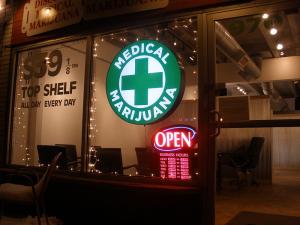Federal judges stuck up for California marijuana growers and a Connecticut medical marijuana patient, another Seattle suburb goes NIMBY on safe injection sites, and more.

California Federal Judge Blocks Prosecution of Marijuana Growers. A federal district court judge in San Francisco ruled on Tuesday that federal prosecutors cannot move forward with their prosecution of two Humboldt County pot growers because the pair was in compliance with state laws. Judge Richard Seeborg held that the Rohrabacher-Farr amendment blocked such prosecutions, and the case is closed unless or until that amendment expires.
Nevada Opens Up Marijuana Distribution Rights. The state Department of Taxation concluded Thursday that there weren't enough liquor distributors who wanted to transport marijuana to pot shops and decided to open the business up to other potential distributors. "The capacity of only liquor wholesalers to serve the market seems lacking," said Deonne Contine, executive director of the tax department, in remarks reported by the Las Vegas Review-Journal. "I think the evidence is fairly clear today that this market needs to be opened up," she said.
Medical Marijuana
Connecticut Federal Judge Rules Employee Not Hired Because of Medical Marijuana Can Sue. A federal district court judge in New Haven ruled on Tuesday that a woman who was using medical marijuana in compliance with state law can sue an employer who rescinded her job offer after she tested positive for marijuana. The woman had previously disclosed her medical marijuana use and had quit her former job when, one day before she was supposed to begin her new job, the company notified her it was rescinding the offer. The ruling echoes one last month in Maine's Supreme Judicial Court, and may signal the beginning of judicial recognition of the employment rights of medical marijuana users.
Arkansas Hasn't Seen Any Grow or Dispensary Applications Yet. With the state halfway through its application period for medical marijuana grow and dispensary licenses, state officials said Friday that they had yet to receive any applications, but they weren't worried. "We are not concerned, as we understand the applications require detailed and specific information that will take time to complete," Department of Finance and Administration spokesman Scott Hardin told the Associated Press. "Applicants are likely performing their due diligence to provide quality applications." The deadline for applications is September 18.
Harm Reduction
Another Seattle Suburb Rejects Safe Injection Sites. The city council in south suburban Federal Way voted Tuesday night to ban safe injection sites in the city. The vote comes after a King County task force recommended opening two safe injection sites in the county, which includes Seattle. Another Seattle suburb, Bellevue, approved a similar NIMBY ban just days ago. One safe injection is set for Seattle; the other is supposed to open in one of the suburbs.
Comments
Hmmmm
re: hmmmmm
tl;dr
Add new comment